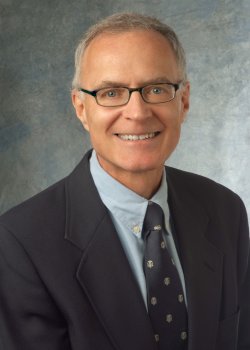
AMMRC Celebrates 35 years of Mechanical Characterization at CWRU

The years 2005-2010 continued work from the early 2000’s with new funding exceeding $6M, along with continued growth of the AMMRC manufacturing facilities and Lewandowski research group to include: Sergey Solv’yev (M.S.), Katy Lee (M.S.), Alan Vormelker (M.S.), Xin Tang (M.S.), George Sunny (M.S.), Phil Dahlstrom (M.S.), Jeremy McNatt (M.S.), Dave Herman (M.S.), Lisa Diebler (M.S.), Justin Brosi (M.S.), Shweta Dike (M.S.), Sue Schriener (M.S.), Brian Benini (M.S.), Robert Park (M.S.), Fuping Yuan (Ph.D.), Ali Shamimi-Nouri (Ph.D), Josh Caris (Ph.D./Post Doc),), Dr. Y. Liu, Dr. D. Li, Dr. R. Varadarajan, Dr. X.J. Gu.
Multiple new individual and collaborative multi-year research grants were obtained from Defense Advanced Research Projects Agency (DARPA), Boeing, Pratt & Whitney, Army Research Lab (ARL), Office of Naval Research (ONR), General Electric, Timken, National Institute of Health (NIH), Air Force Office of Scientific Research (AFOSR), National Science Foundation (NSF), National Physical Sciences Consortium (NPSC), DWA Composites. In addition, the Ohio Third Frontier provided $1.1M to expand the AMMRC to include the Nitinol Collaboration Accelerator Lab (https://ammrc.case.edu/node/50) at CWRU in conjunction with NASA GRC, University of Toledo, Norman Noble Inc., and the Cleveland Clinic. A variety of industrially relevant projects were conducted in close collaboration with the companies and agencies listed, as summarized below.
This era expanded work on structural materials to include biomedically-relevant materials systems as well as the evaluation of the mechanical reliability of implantable electrodes in collaboration with The Cleveland Functional Electrical Stimulation (FES) Center under the leadership of then Director, Professor P. Hunter Peckham. This early work helped shape the design of components used in neurostimulation and neuromodulation systems improving the quality of life for those with spinal cord and neurological disorders. The AMMRC was involved with materials design and mechanical reliability evaluations of implantable electrodes to provide functionality to paralyzed individuals, in addition to evaluation of heart pacemaker leads. The Nitinol Collaboration Accelerator Laboratory houses equipment for the clean processing of Nitinol (a nickel and titanium alloy) as well as evaluation of both superelastic and shape memory versions of these materials. Nitinol is used in a variety of biomedical and structural/functional components, including cardiovascular stents, actuators, and dental archwires for orthodontia.
Figure 1 shows some of the equipment used to evaluate the mechanical reliability of fine implantable wires/cables, while Figures 2 and 3 shows some of the unique processing equipment that enables vacuum arc casting and extrusion of Nitinol materials, respectively.
Figure 1. Fatigue testing of fine implantable wires/cables can be tested in rotating bending (left) as well as flex bending (right) fatigue in the Nitinol Collaboration Accelerator Lab.
Figure 2. The clean processing of Nitinol (and other reactive metals) can be conducted in the Nitinol Collaboration Accelerator Lab using vacuum arc melting.
Figure 3. Deformation processing and extrusions of Nitinol (and other materials) can be conducted in the Nitinol Collaboration Accelerator Lab using a laboratory scale extrusion apparatus.
We invite you to join us in the AMMRC’s 35th anniversary celebration as we celebrate decades of research, development, and Center milestones. Visit the AMMRC web site, ammrc.case.edu, and keep watch on social medial for insights on the AMMRC through the decades as we share stories about the evolving laboratory and honor the efforts of the diverse academics, staff, and students that have propelled the AMMRC forward.
Social media: Join us on social media for fun and engaging content that will help you discover the AMMRC’s history and where it’s heading in the future. #AMMRC35.
